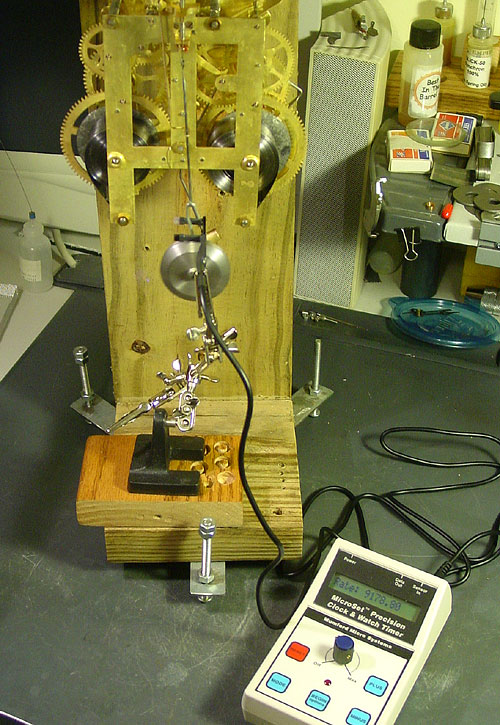
|
| This is the clock movement bench where the
movement is photographed, inspected, repaired,
and reassembled. The computer displays reference
information, images of the movement, and a
"sound graph" of the amplified ticking
to verify that the finished movement is in
beat. |

|
| All parts are carefully checked for proper
fit. Excessively worn pivot holes are reamed out
and precision bushings installed to ensure proper
operation and long life. |

|
| Each part of a disassembled clock movement is
carefully inspected and hand cleaned [above] in
one or several cleaning solutions as appropriate
for that movement, or ultrasonically cleaned
[below], or a combination both. |

|
| Parts undergoing ultrasonic cleaning in a
special clock cleaning solution. |

|
| A reassembled clock movement is
electronically calibrated to ensure that it is
"in beat" and will keep time when
reinstalled in the clock case. |

|
| Across the room is this bench where case
repair and other less clean operations are
performed. |

|
| This small lathe sees a lot of use in turning
and polishing rough and worn clock pivots, as
well as fabricating special parts and
tools..... |

|
| .....and for the big jobs, this old 9-inch
South Bend from the 1920s can still get the job
done! |

|
| This level wall shelf is one of several
locations where a finish clock is allowed to run
for a couple of weeks to facilitate final testing
and regulating before being returned to the
customer. |

|
| This strange looking contraption is a custom
made test rack that can support a variety of
clock movements, including weight powered
movements and complete cuckoo clocks. Undergoing
a test run when this picture was taken is a
weight powered wooden movement from the
1830s.
|
|